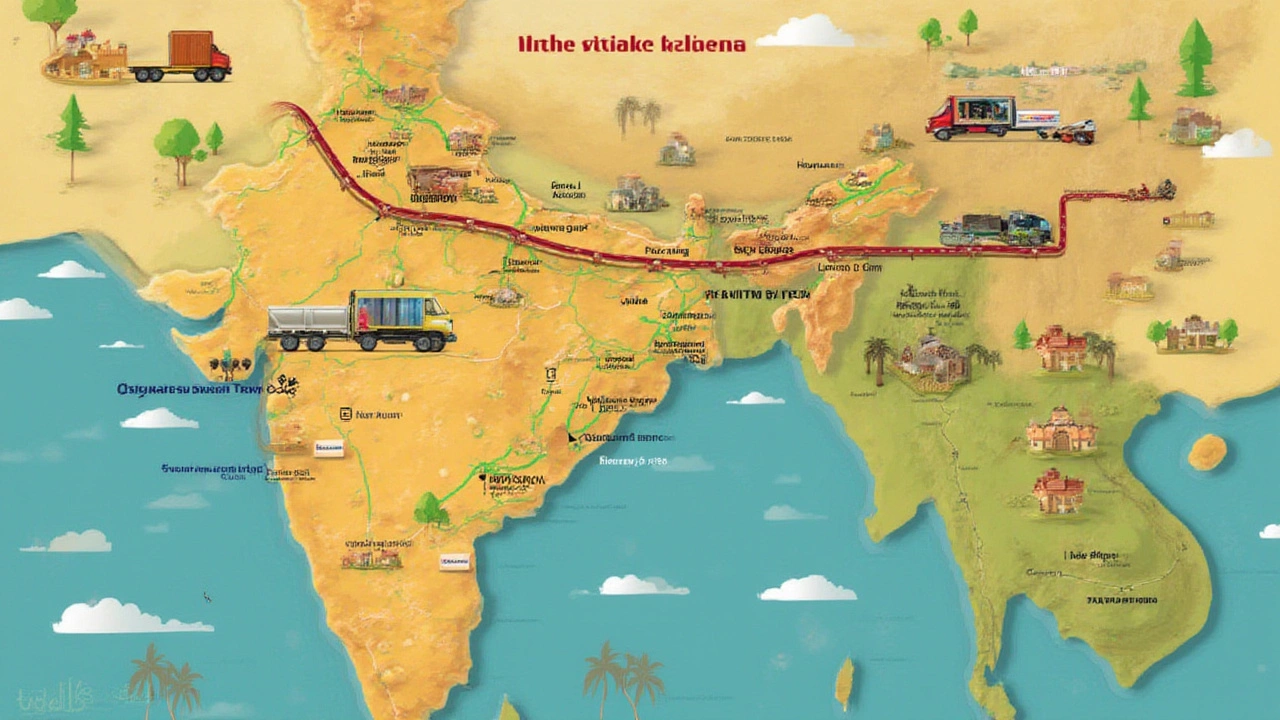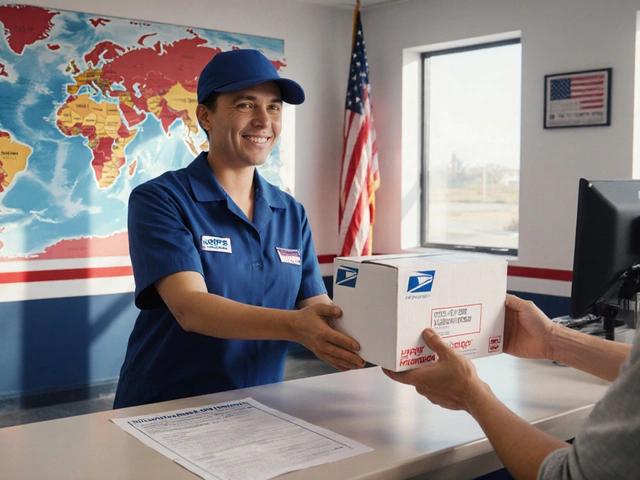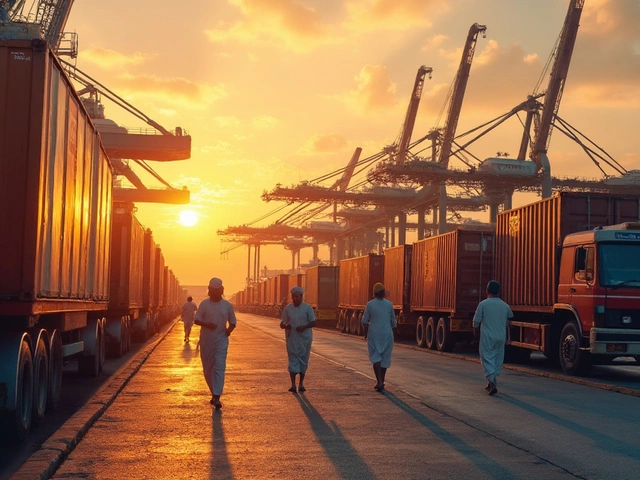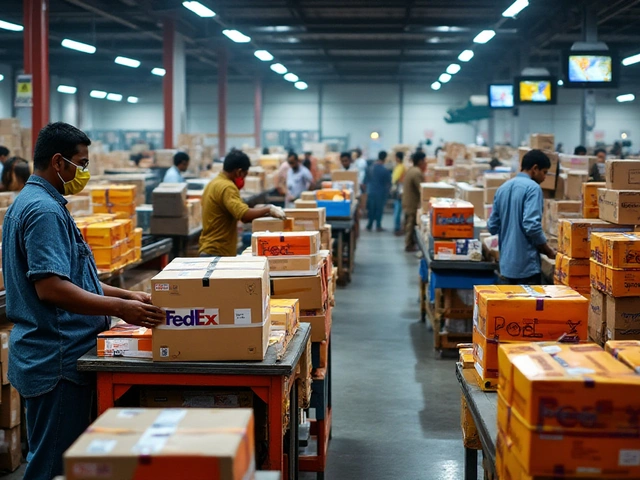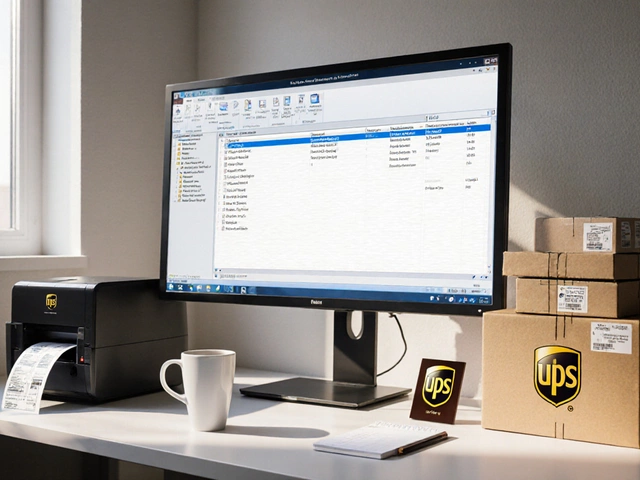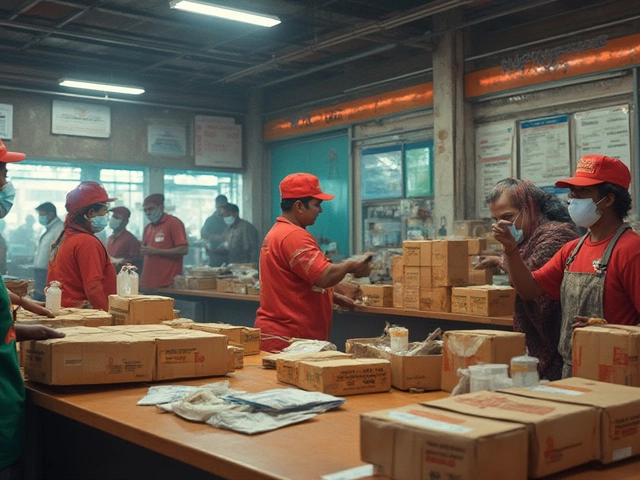If you've ever wondered whether Aunt Mary could ship her famous cookies to your place or if your new speaker from an online store will reach your front door — the answer usually comes down to something called delivery coverage. Sounds boring? Stick with me. Delivery coverage actually determines if your location falls within a courier or store’s magic circle where their drivers will actually drop off your order. If you’re just shopping online, it explains those annoying 'Sorry, we don’t ship to your area' messages. If you run a store or manage logistics, it’s the difference between happy customers and a pile of missed deliveries.
What Does Delivery Coverage Actually Mean?
Think of delivery coverage as a map drawn by couriers and stores, defining where they can realistically promise to deliver stuff. It’s not just a nice-to-have touch: it's the backbone of modern shipping. Some companies cover an entire country. Others, just a cluster of postal codes. Factors like distance, transport networks, population, and even legal restrictions all play into where that line is drawn.
For example, Amazon Prime promises free same-day or next-day shipping on a huge number of items, but not everyone gets the same deal. Prime delivery in Manhattan looks nothing like Prime in rural Wyoming. The differences are all about delivery coverage. The further you are from the company’s warehouse or depot, the less likely you’ll be in their coverage sweet spot. Some delivery companies only ship within a 10-mile radius of their hub; others set coverage based on ZIP or postal codes. Sometimes, delivery coverage maps change by the year, by the week, or even seasonally. Crazy, right?
Let’s talk specifics: Courier services (think FedEx, UPS, DHL) set up regions called service zones. These zones literally set your shipping rates, transit times, and whether your area is eligible for pickup or delivery. According to a 2024 study by MHI Logistics, over 63% of consumers reported ditching purchases in the last six months because their address was outside a seller's coverage area. That’s more than half of missed sales over a basic map!
Online marketplaces and groceries use similar systems. Companies like Instacart or Gorillas often restrict their coverage based on urban density and proximity to suppliers. If you’re out in the sticks, your choices for 20-minute grocery delivery shrink fast. It’s not personal: It’s math and logistics.
Legal and infrastructure issues are also at play. Local rules or postcodes that are hard for drivers — remote islands, gated communities, some high-crime or hazardous areas — are often left out of standard shipping. Even drones and automated delivery robots can only go so far, bumping up against delivery coverage lines drawn for safety reasons.
Here’s a quick fact: Over 90% of the world’s population is technically within a two-day ground delivery window, according to a UPS press release from late 2023. But less than 50% of US households actually receive those options because of how coverage is mapped by each carrier. If you’re wondering why your cousin in San Francisco gets next-day service and you don’t — the answer is coverage.
| Company | Typical Delivery Coverage Area | Special Considerations |
|---|---|---|
| Amazon | 85% of US addresses | Varies by item, warehouse, membership |
| FedEx | 220+ countries | Remote surcharges for rural delivery |
| Instacart | More than 70% of US households | Only within selected city zones |
| Domino's Pizza | Local radius, 2 - 10 miles | Varies by franchise |
So next time you see a delivery fee or a 'Sorry, not in your area' message, it’s just companies doing their coverage math. Geography wins out, every time.
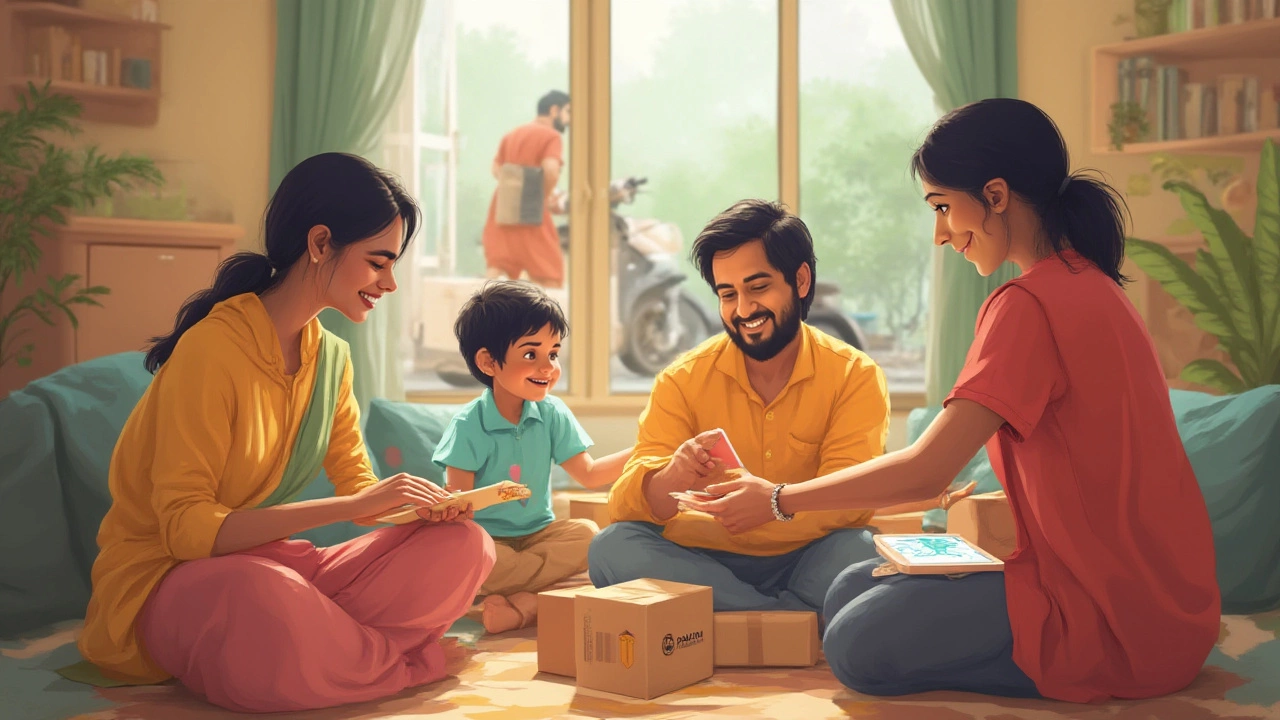
How to Check and Expand Delivery Coverage: Insider Tips
So, what can you do with this knowledge? First, always check the store’s delivery coverage maps or service area lists before you buy or send something. Most websites now include a quick ZIP code checker that spits out instant answers. Don’t skip it. Even giants like Walmart and Target let you punch in your area before they waste your time.
For businesses, extending delivery coverage is a proven way to attract new customers. But it’s not as easy as just adding an extra driver. Here’s what really works:
- Partner with third-party couriers or gig economy drivers. Startup food brands often sign up with platforms like DoorDash or Uber Eats to piggyback on their network without hiring new staff.
- Set up local pickup points. Think Amazon Lockers or parcel drop boxes in supermarkets. This widens your coverage without sending vans all the way to less accessible neighborhoods.
- Use software to dynamically adjust your coverage zone. Some logistics apps help businesses shrink or grow their effective area based on driver availability, weather, and traffic.
- Test new delivery methods for hard-to-reach customers, like using bikes or e-cargo trikes in dense urban areas where trucks get stuck.
One great example: In 2024, grocery chain Carrefour rolled out an AI-powered coverage planner. Using real-time demand and GPS data, they expanded their delivery coverage by 18% in Paris — with no extra vans and just smarter routing.
If you’re a customer and you’re just outside a store’s coverage, don’t give up. Some smaller shops will work with you for a delivery fee, especially if you ask. Others let you order for in-store pickup or suggest a nearby pickup partner. Pro tip: Smaller businesses often update their coverage by hand, so if new construction pops up in your subdivision or a major road opens, coverage zones can change overnight. Always ask — sometimes you’ll be surprised.
Another point missed by most people: Your apartment number, building access, or business hours all impact coverage. Couriers hate buildings with no delivery access or tight security (think high-rises). If you include proper instructions or provide a secure drop-off, you’re more likely to be inside someone’s practical coverage area even if you’re at the fringe.
And one more tip: If you’re running into coverage woes a lot, check for local delivery aggregators. Some smaller logistics startups fill gaps left by the big guys, especially in second-tier cities or rural areas. They’re not flashy, but they get the package from A to B within their reliable circle — sometimes even same-day.
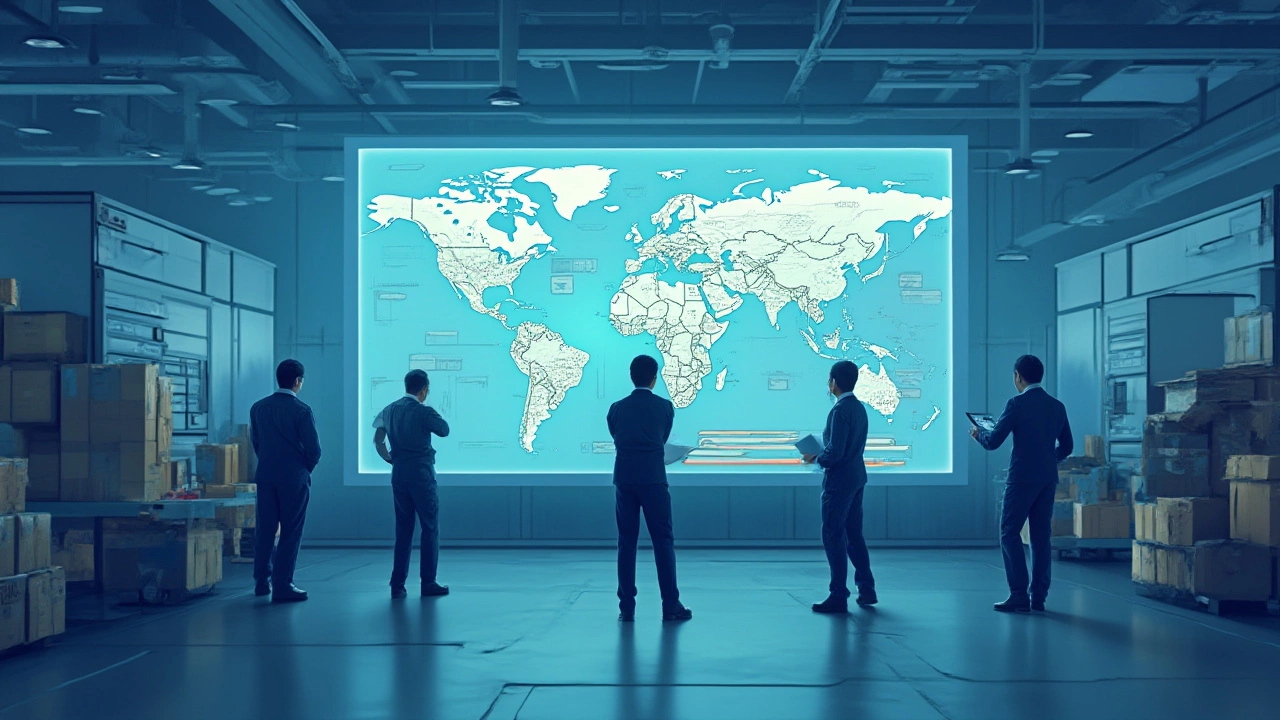
Delivery Coverage in 2025: What’s Next?
Delivery coverage is morphing fast. A decade ago, same-day delivery was reserved for big urban centers. Today, drone deliveries, autonomous vans, and smart routing software are stretching those lines further and further. The rise in local micro-warehouses, known as 'dark stores,' is shrinking delivery radii and making instant delivery common in places that weren’t even covered last year.
According to a June 2025 report by eMarketer, the fastest-growing delivery coverage leap in the US is happening outside traditional major metros. Secondary cities like Boise, Raleigh, and Tulsa saw a 24% jump in local courier coverage just within the past year. That’s not Amazon alone. Local services teamed up with independent drivers, using data and GPS to deliver to neighborhoods previously skipped.
Why the push? Customers now expect more — and they’re vocal about it. Social media complaints over delivery coverage have doubled in two years, forcing businesses to reconsider where those lines are drawn. At the same time, labor shortages and rising fuel costs limit how far a response can realistically go.
Refining delivery coverage is now a central strategy for both giant retailers and mom-and-pop shops. With predictive analytics, companies are learning how to temporarily expand their coverage for seasonal spikes (like holiday gifting or back-to-school sales), then scale back in slow months to avoid wasted costs. Businesses use machine learning to forecast which routes will be most profitable — not just which ones are possible. If you see 'special delivery event' pop up during a shopping holiday, it’s probably a temporary extension of their standard coverage, just to keep up with demand.
There are still hurdles. Rural communities — about 14% of US households as of late 2024 — remain underserved. Fresh food, big furniture, or medical goods just can’t be shipped reasonably to every farmhouse on every back road, no matter the tech. Regulatory challenges and insurance requirements for drones or robots mean many far-flung spots won’t see instant delivery soon.
But innovation is closing the gap. In late 2024, UPS and Zipline partnered to deliver prescription meds via autonomous drones to remote Alaska, shrinking what used to be a two-day journey into a two-hour hop. Marks & Spencer in the UK piloted electric vans with robotic loaders to run multiple neighborhood drops outside their original London zone. The bottom line? Expect the delivery coverage map to stay in flux, as companies hustle to draw — and rewrite — those digital circles on the map to win your business.
So the next time you’re frustrated by a 'not in your area' warning, just remember: that invisible delivery coverage line is both a challenge for companies and an opportunity for some very clever problem solving. Whether you’re a customer, a small business owner, or just obsessed with getting your pizza hot, understanding delivery coverage will help you make the smartest calls and set your expectations. The map is changing faster than ever, and there's never been a more exciting time to watch how those lines redraw our daily lives.
